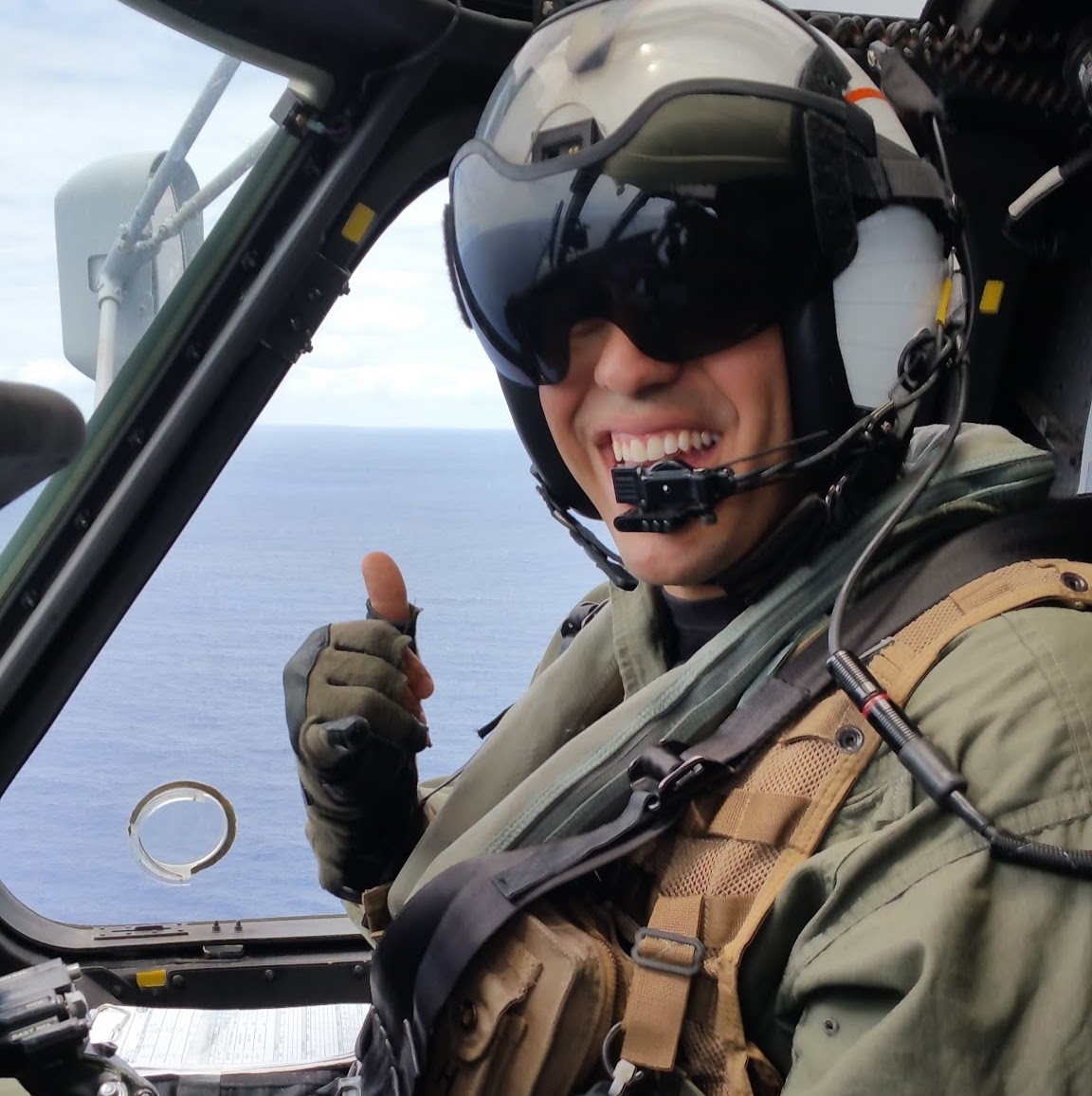Careers
Naval Aviation
Search for underwater threats. Deliver payloads of incredible firepower or necessary manpower. Execute strategic aerial maneuvers anywhere from the stratosphere, to mere feet above the sea. This is just a glimpse into your career as a Naval Aviator or Naval Flight Officer. You also may find yourself:
- Flying some of the most innovative and high-tech aircraft in the world.
- Providing vital attack, defense, and logistic support to the Fleet.
- Controlling and maintaining all internal and external aircraft systems.

Naval Aviation is renowned for the demands it places upon its flyers. The skills and concentration required to land a high-performance jet on-board an aircraft carrier deck pitching in the black of night, or to track a submarine while flying at only a few feet above stormy seas, are not only linked to a solid academic background or to top physical conditioning. There is more to it than that; it requires a combination of talents and dedication that many people possess, but few are challenged to use to full measure.
Upon commissioning, Marine Student Naval Aviators (SNA) first complete their introductory training at The Basic School (TBS) before reporting to Naval Air Station (NAS) Pensacola, while Navy SNA and Student Naval Flight Officers (SNFO) arrive at NAS Pensacola to begin their flight training immediately. All flight training begins at NAS Pensacola, the “Cradle of Naval Aviation”. SNA and SNFO spend about six weeks in Aviation Preflight Indoctrination (API) where they are challenged both academically and physically. Classes include: Engineering, Aerodynamics, Navigation, Aviation Physiology, Flight Regulations. and Water Survival.
Upon completion of API, student pilots (SNAs) and student navigators (SNFOs) proceed to their separate primary training pipelines. Primary SNA training is conducted at three bases: (1) NAS Whiting Field in Milton, Florida, (2) NAS Corpus Christi in Texas, and (3) Vance Air Force Base (AFB) in Enid, Oklahoma. For the SNAs, primary training is approximately 22 weeks and includes ground-based academics, simulators, and flight training in the T-6B Texan II. Primary training consists of six stages: Familiarization (FAM), Basic Instruments, Precision Aerobatics, Formation, Night FAM, and Radio Instruments.
Pipeline selections occur upon completion of primary training. This is primarily based on the current and projected needs of the services, but the student’s performance and preferences are also taken into account. Student Naval Aviators are selected for: Maritime (multi-engine prop), Tilt-rotor, E-2/C-2, Rotary (helicopters), Strike (jets), or E-6 TACAMO. After pipeline selection, SNAs report first to intermediate and then to advanced training.

MIDN Alex Walker on an aviation cruise June 13, 2018.
Naval Flight Officer
Naval Flight Officer Training conducts four pipelines – Strike Fighter, Airborne Early Warning (AEW), Maritime Patrol (MPR), and Take Charge and Move Out (TACAMO). Training of all four NFO pipelines is conducted at NAS Pensacola. All NFOs begin their primary training in the T-6A Texan II, learning the basic skills of aviation, visual and instrument navigation, and communications. The training consists of academics, navigation and communication trainers, high fidelity simulators, and instrument, navigation, and formation flights. Students selected for land-based aircraft (MPR and TACAMO) move on to Advanced training at VT-4, while carrier-based students (Strike Fighter and AEW) receive additional T-6A training. Students selected for Strike Fighter move on to Advanced training at VT-86, while AEW students proceed to VT-4.
Advanced Training at VT-4 and VT-86 provides tactical training to student NFOs that tests and prepares them for their future fleet aircraft. Upon completion of Advanced training, NFOs receive their wings of gold and move on to their respective Fleet Replacement Squadron (FRS).
MPR, TACAMO, and AEW students receive Advanced training at VT-4 utilizing the Multi Crew Simulator (MCS). The MCS is a reconfigurable trainer that allows students to learn how to employ the systems and tactics of their fleet aircraft in real world mission scenarios with multiple crew members and multiple aircraft. Training focuses on Crew Resource Management (CRM), communications, and sensor utilization while learning tactical procedures for various missions. Students learn how to utilize RADAR (including Synthetic Aperture and Inverse Synthetic Aperture), Data Links, Electro-Optic/Infra-Red cameras, Electronic Surveillance, acoustic, and navigation and communications systems.
MPR students utilize these systems to perform Anti-Surface and Anti-Submarine Warfare, Electronic Warfare, Intelligence Surveillance and Reconnaissance, and Search and Rescue missions. Upon graduation, NFOs continue to VP-30 in Jacksonville, FL for training in the P-3C, EP-3E, or P-8A.
TACAMO students learn complex communications protocols, prioritization and CRM skills that prepare them for training in the E-6B at VQ-7 in Oklahoma City, OK.
AEW students learn Command and Control and Air Intercept Control, and after graduation move on to VAW-120 in Norfolk, VA for training in the E-2C or E-2D.
Strike Fighter NFO training is conducted at VT-86 utilizing specially modified T-45C simulators and aircraft incorporating the Virtual Mission Training System (VMTS). VMTS allows for NFOs to train for air-to-air or air-to-ground missions using a synthetic RADAR that mirrors the capability of the F/A-18. Utilizing a data link network and an instructor ground station, students perform complex missions against multiple air and surface targets. NFOs train for Strike, Close Air Support, and All-Weather Intercept missions. After graduation, Navy NFOs will train in the F/A-18F with either VFA-106 in Virginia Beach, VA or VFA-122 in Lemoore, CA, or the EA-18G with VAQ-129 in Whidbey Island, WA.